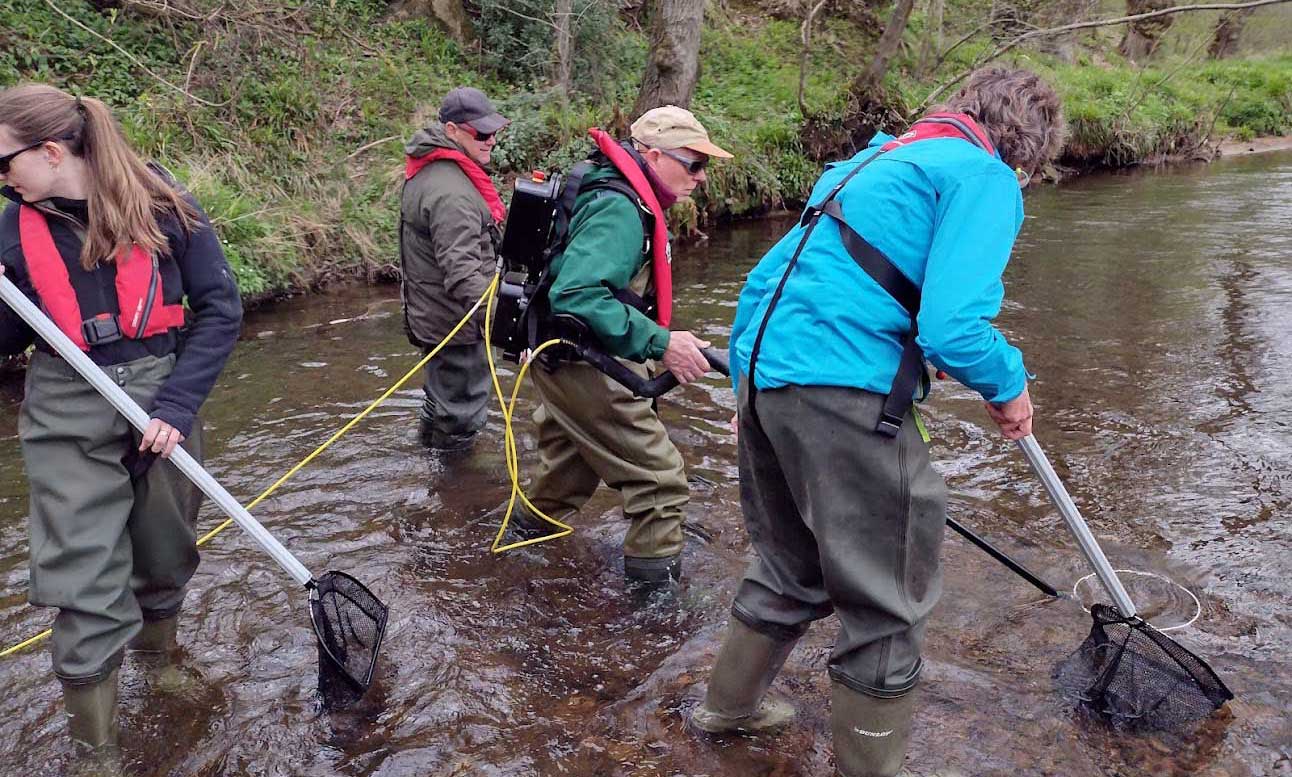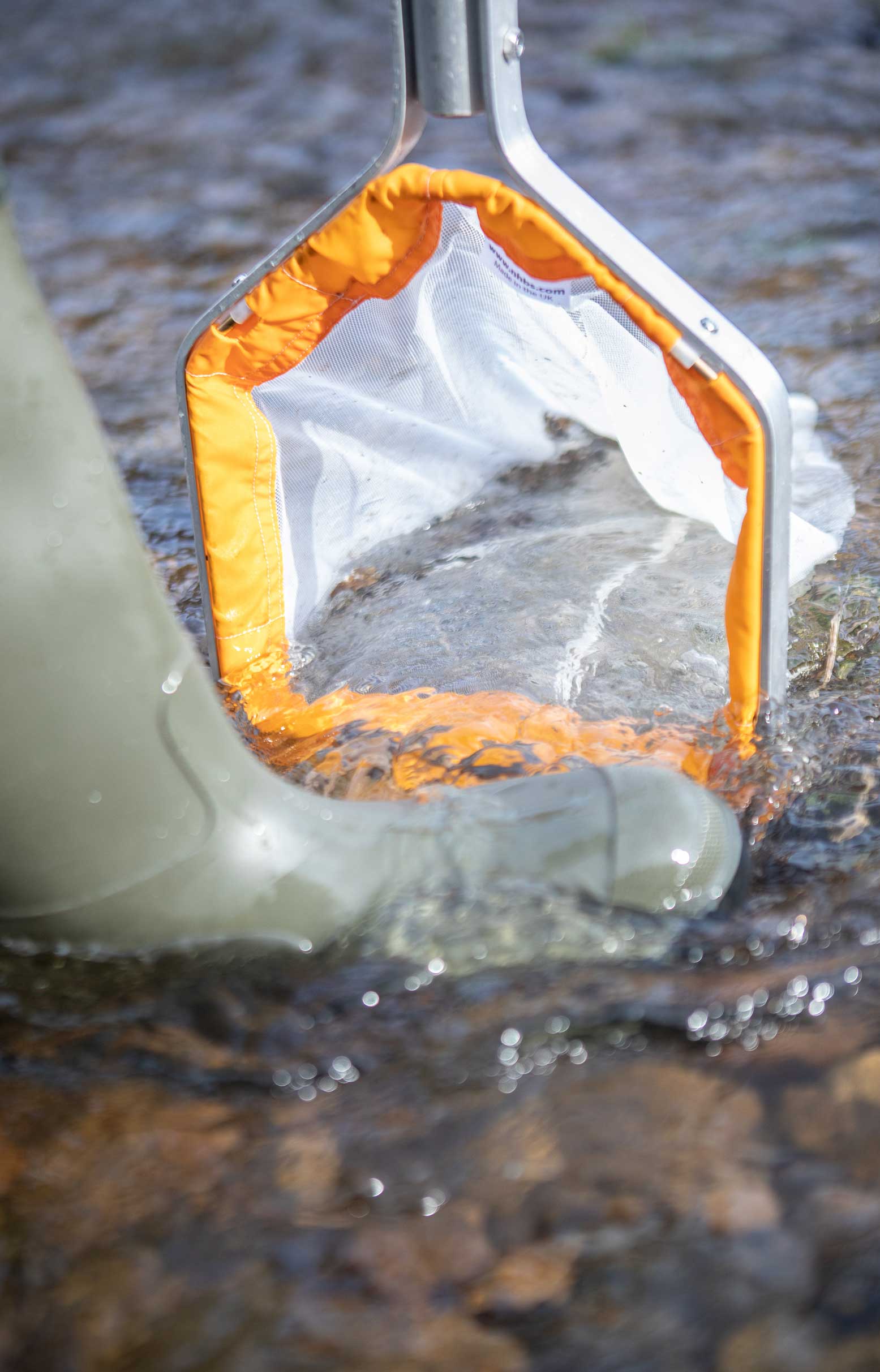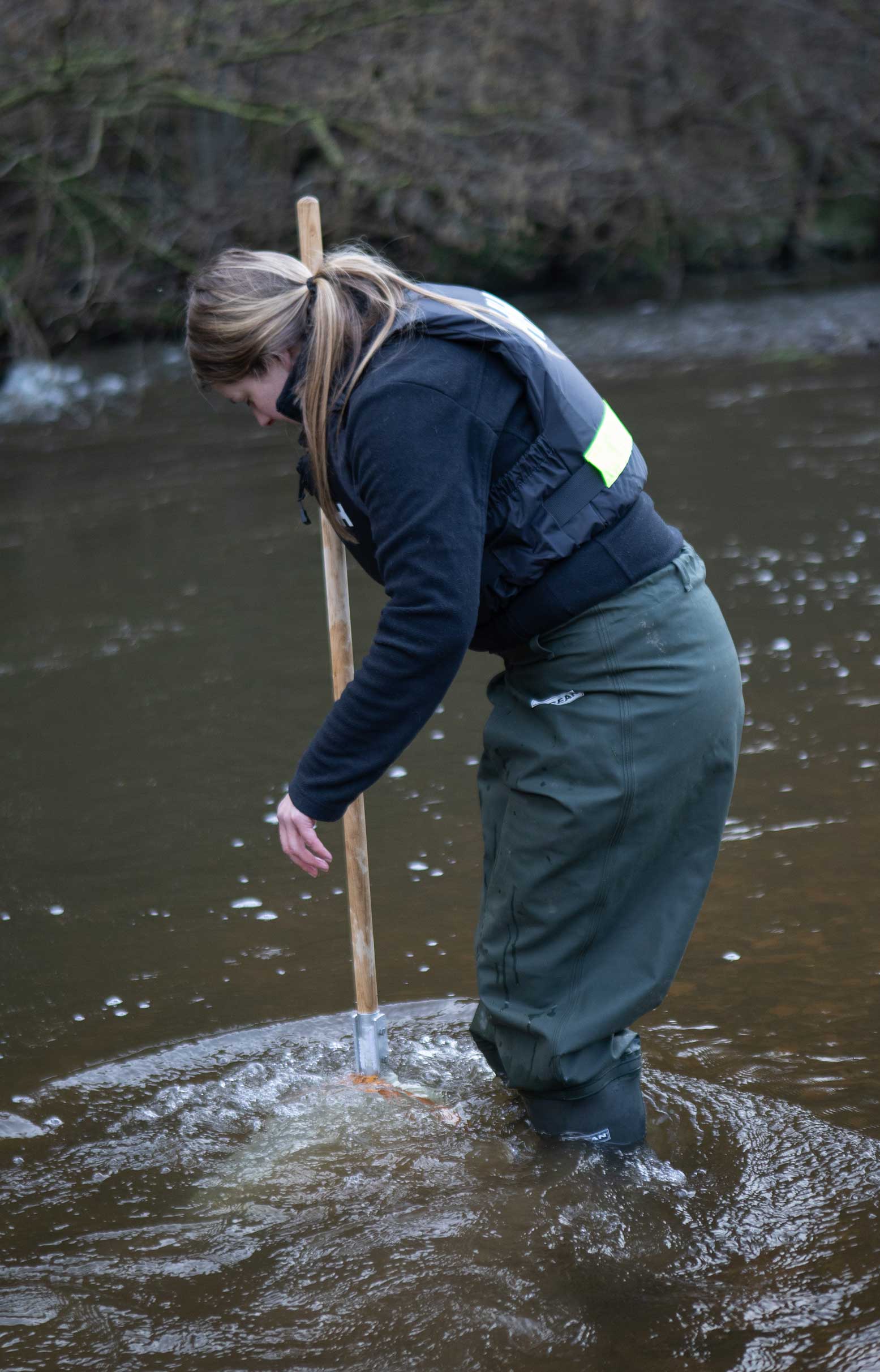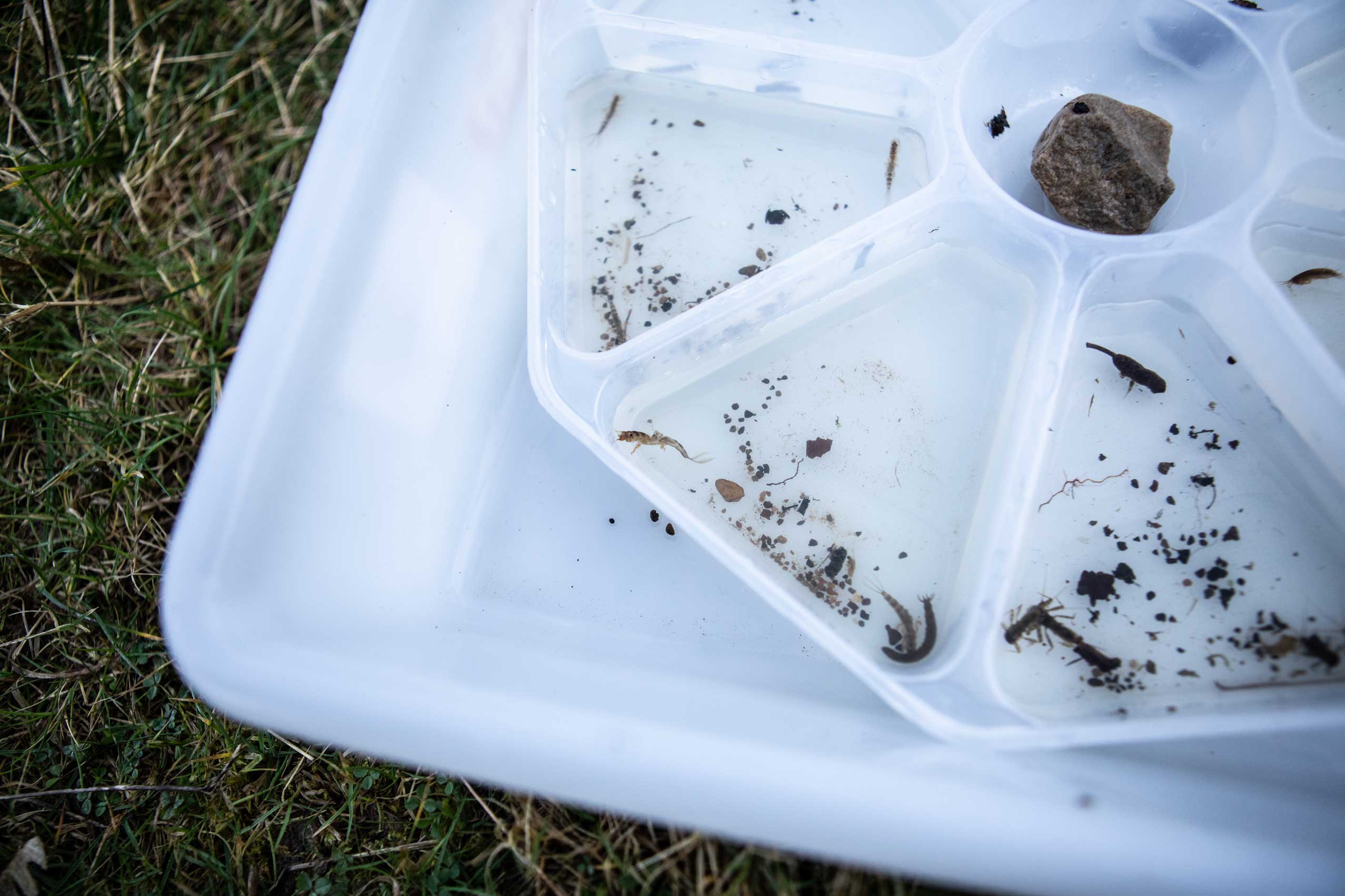One of our key aims for the Esk & Coast is to engage with local communities, empowering them to work together and take action to protect the water environment, whilst inspiring the next generation to take ownership of their rivers. Whether it is helping out with species monitoring, planting a tree or two, or river dipping with local schools, we all have a role to play in creating a sustainable and resilient future for all.
Freshwater fish monitoring
Our team of experienced and specially trained volunteers help to deliver an annual programme of freshwater fish surveys. These surveys allow us to gain a wider understanding of the Esk’s populations of Atlantic salmon, sea/brown trout, sea/brook lamprey, European eel and stone loach. The data collected is sent to Hull International Fisheries Institute where it is analysed and documented in an annual report. To see the report, click here.

Riverfly monitoring
Each with their own survey site across the Esk & Coastal Streams Catchment, specially trained Riverfly Volunteers head out between May-August to survey for freshwater invertebrates. The data collected is invaluable to monitoring the health of the catchment; riverfly are highly useful positive indicators for good water quality, a drop in their numbers indicates something isn’t quite right, allowing us to react quickly during a pollution incident.



Esk Volunteers
To deliver our conservation projects, a team of Esk Volunteers regularly joins us to help with tree and hedge planting/maintenance, hedge laying, plug planting, and many other practical tasks. Without their help our projects wouldn’t be possible, but, with the extra pair of hands we can cover a lot more of the catchment to restore and enhance our natural environment.
